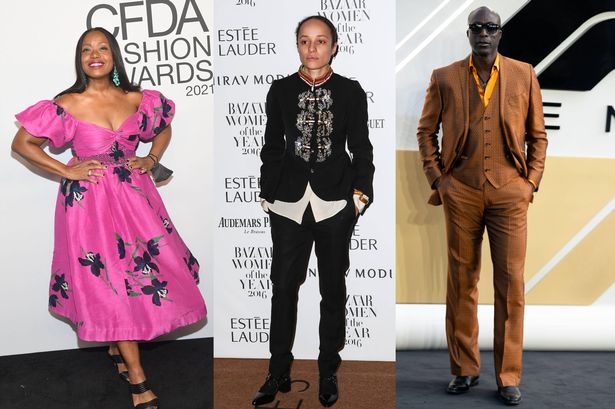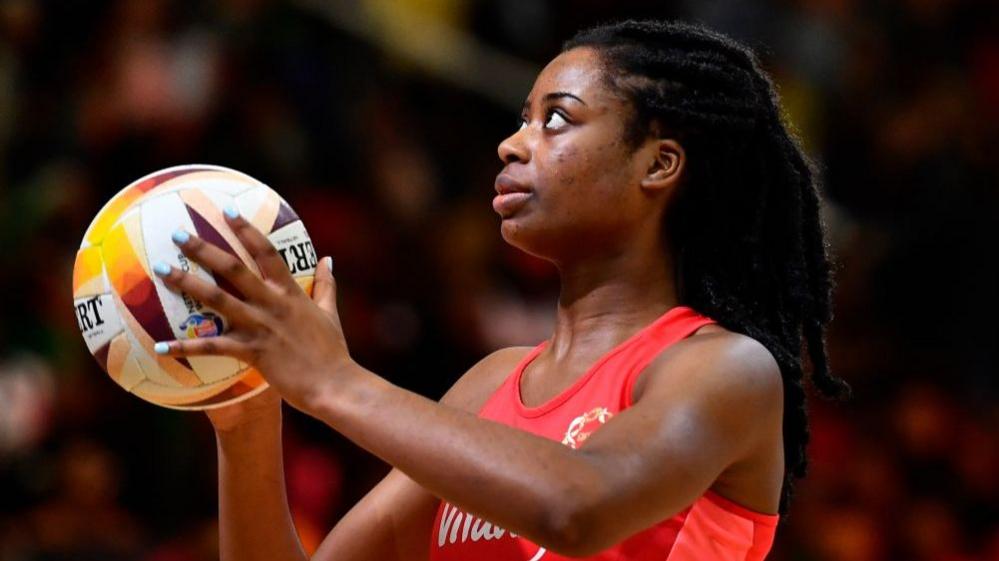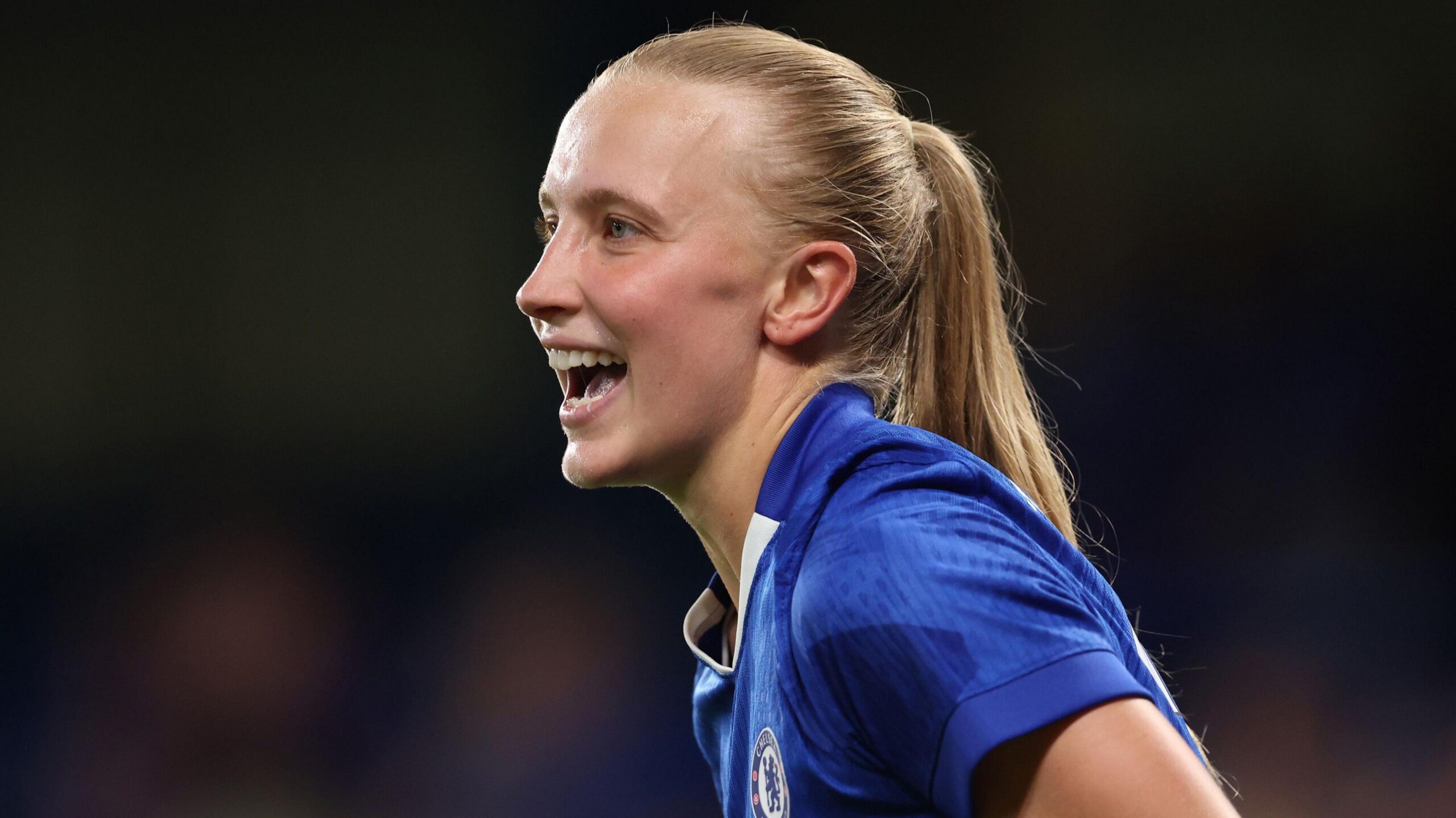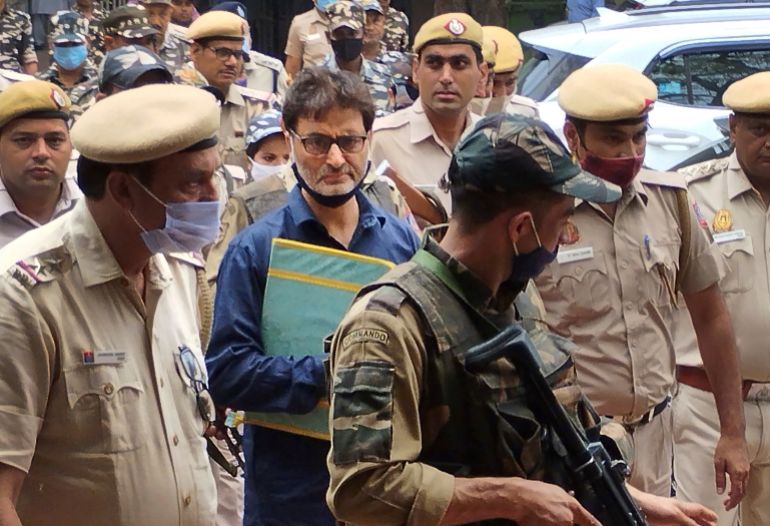Fashion history is often told through a narrow lens, but the likes of Gabrielle Chanel, Christian Dior and Pierre Balmain are not the only ones who have shaped the industry
Fashion history is far too frequently recounted through a restrictive perspective. The names of Gabrielle Chanel, Christian Dior and Pierre Balmain are lauded for their creativity – yet there’s considerably more to fashion history than Parisian couturiers.
Interwoven throughout every period of style revolution are the concepts, craftsmanship and bravery of black designers who propelled the industry onwards.
From London’s streetwear trailblazers to the haute couture establishments of Paris and New York, their contributions have transformed not merely how garments appear but what they represent.
As Black History Month encourages us to rediscover forgotten legends, here are 11 black designers who have helped mould fashion history.
READ MORE: What is ‘fragile fashion’? The emerging trend turning heads at London Fashion WeekREAD MORE: Pamela Anderson looks unrecognisable as she debuts new look at Paris Fashion Week
Willi Smith
Regarded by the fashion industry as the creator of streetwear, Willi Smith merged reasonably-priced clothing with luxury, altering the course of American fashion throughout the 20th century.
Smith established his legendary brand WilliWear Ltd. in 1976 and earned over $25 million (£18.5 million) in sales by 1986, proving the appeal of his creations, which captured a cheerful and relaxed approach to fashion.
From the beginning, he aimed to create garments that were accessible, gender-neutral and grounded in what individuals were already sporting on the streets.
His vision was egalitarian. As he expressed it, “I don’t design clothes for the Queen, but for the people who wave at her as she goes by.” Though Smith passed away in 1987 aged just 39, his influence remains substantial today.
He might not always be the initial name that springs to mind when considering streetwear or sportswear, but his drive to democratise fashion and integrate style into everyday existence proved revolutionary.
Stephen Burrows
During the early Seventies, Stephen Burrows emerged as the dazzling young talent of American fashion.
Operating from a modest workshop in New York before establishing his own boutique at Henri Bendel, he transformed soft jersey into vibrant colour-blocked garments featuring his now-iconic “lettuce hem” that fluttered as the wearer moved.
His designs embodied Seventies nightlife culture: effortless, seductive and exuberant, crafted for a generation embracing liberation on the dance floor.
Burrows’ crowning achievement arrived in 1973, when he became the youngest amongst five Americans selected to present at the Battle of Versailles, the cross-Atlantic competition that established US sportswear’s reputation.
Whilst French couture remained rooted in convention, Burrows’ flowing shapes and striking colours appeared revolutionary. The ovation that evening established him as amongst the first black designers to achieve such worldwide recognition.
Patrick Kelly
An acclaimed African-American fashion designer who rose to prominence in France during the mid-Eighties, Mississippi-born Patrick Kelly became the first American admitted into the esteemed Fédération de la Haute Couture et de la Mode. Kelly’s creations are celebrated for their incredibly vibrant, playful nature, drawing heavily from pop culture and black heritage.
During the Black Lives Matter demonstrations, Kelly’s reputation gained prominence through The Kelly Initiative, a collective of black industry professionals campaigning for fair employment prospects for black talent within the sector.
Growing up surrounded by quilts, buttons and his grandmother’s sewing tuition, Kelly channelled that deep-rooted connection into dynamic designs after establishing himself in Paris.
For more stories like this subscribe to our weekly newsletter, The Weekly Gulp, for a curated roundup of trending stories, poignant interviews, and viral lifestyle picks from The Mirror’s Audience U35 team delivered straight to your inbox.
His creations – jersey frocks in brilliant colours, decorated with clashing buttons and bows – are celebrated for their incredibly vibrant, playful nature, drawing heavily from folklore and black heritage.
By 1988, Kelly’s catwalk presentations showcased everything from flawless tailoring to extravagant showmanship – sharp flannel one moment, dramatic gardenia-adorned plunging necklines the next. However, it was his belief that fashion could simultaneously be daring, amusing and haute couture that ensured his impact endured well beyond his premature death in 1990.
READ MORE: Molly-Mae Hague walks Paris runway alongside Kendall Jenner and Cara Delevingne
Dapper Dan
Daniel “Dapper Dan” Day transformed Eighties storefront tailoring into something remarkable.
In 1982, he launched Dapper Dan’s Boutique on 125th Street in Manhattan – a venue where high-end brands and hip-hop culture merged. Using screen-printed versions of Gucci, Fendi, Louis Vuitton and other high-end logos on leather bombers, tracksuits and custom gowns, he remixed exclusivity into the vernacular of street style, giving power back to a community that’d long been shut out of runway rooms.
His shop became a destination for the stars of hip-hop: Salt-N-Pepa, LL Cool J, Mike Tyson, Bobby Brown – people who weren’t just wearing fashion but embodying it.
Dapper Dan’s bold use of logos and his playful confrontation with copyright sparked legal fights, counterfeiting raids and ultimately the closure of his original shop in 1992.
Decades later, the tables turned. In a striking move, Gucci acknowledged his influence in 2017, opening a partnership and even a new atelier in Harlem in 2018.
Today, Dapper Dan stands not as an outlaw but as a founding father of luxury streetwear: someone whose audacity reshaped how fashion, status and identity intertwine.
Ozwald Boateng
In the mid-Nineties, Ozwald Boateng emerged from north London with something that felt both timeless and electric. Born in Muswell Hill to Ghanaian parents, he grew up watching his father in immaculate suits; his mother’s sewing machine taught him discipline, colour and shape.
By his early 20s he’d sold his first collection in Covent Garden, and in 1994 became the first tailor to show in Paris Fashion Week – presenting bespoke menswear in sharp, slim cuts and his signature unexpected palette.
Boateng’s suits embodied a fresh take on formal attire for a new generation. Then, in 1995, he made history by becoming the youngest tailor to open a shop on the iconic Savile Row, infusing its time-honoured traditions with his youthful energy and vibrant colours.
He masterfully blended the meticulous art of British tailoring with elements that paid homage to his roots. Over time, he dressed Hollywood celebrities, designed uniforms, collaborated with Givenchy, and showcased retrospectives in museums.
In doing so, he reinvigorated Savile Row not as a relic of the past, but as a crossroads between tradition and identity – leaving behind a style legacy that continues to echo today.
Tracy Reese
After honing her skills at the esteemed Parsons Fashion School in New York, Tracy Reese launched her eponymous collection in 1998, quickly gaining recognition for her exuberant prints, bright hues, and vintage-inspired femininity.
Her designs weren’t merely aesthetic; they carried a personal touch, encouraging women to move, mix, and celebrate their individuality and narrative.
Alongside her main line, Reese introduced diffusion lines like Plenty and Frock! to extend her design influence to broader markets. Her creations found their way into the closets of notable figures, including former First Lady Michelle Obama, which helped redefine expectations for American ready-to-wear.
In the 2010s, Reese started to reconsider how fashion could be more considerate towards the environment. She decided to shut down her larger operations and returned to Detroit, where she launched Hope for Flowers, a more sustainable venture that focuses on local production, ethical materials and community engagement.
READ MORE: Bad Bunny’s net worth revealed as superstar is confirmed for Super Bowl 2026
Virgil Abloh
Born in Chicago, designer, entrepreneur, stylist and DJ Virgil Abloh was raised in suburban Illinois by Ghanaian parents. He initially trained as an architect before transitioning into fashion through his love for music, art and a friendship with rapper Kanye West.
His unique design elements such as quotation marks, zip ties and industrial straps quickly became the go-to symbols for a generation seeking both irony and aspiration in their fashion choices. This led to the creation of Off-White in 2013.
In 2018, Abloh made history as the first black artistic director of menswear at Louis Vuitton, making his debut with a rainbow-coloured runway that put black models and streetwear codes at the forefront within one of the world’s oldest luxury houses. His shows were a fusion of music, art and activism, positioning designers as cultural conductors rather than just dressmakers.
Abloh’s untimely death in 2021 at the age of 41 brought a promising career to a sudden halt. However, his impact remains indelible, and he is remembered by many as one of the most brilliant creative minds of recent times.
Pharrell Williams
While you may know him for his music, Pharrell Williams also made waves in the fashion industry when he was appointed as the creative director of menswear at Louis Vuitton in 2023 – stepping into the role once held by his friend Virgil Abloh.
Fashion has always been a part of Williams’ life. During the peak of his music duo Neptunes fame in the early 2000s, he co-founded Billionaire Boys Club and Ice Cream with Kenzo’s artistic director Nigo, introducing Japanese streetwear concepts and skate graphics to the American mainstream.
His fashion influence saw oversized trucker hats, jewel-toned hoodies and diamond-printed trainers become integral elements of hip-hop’s new visual language – a fusion of luxury, pop culture and fun.
Williams’ debut show for Louis Vuitton transformed Paris’s Pont Neuf into a golden stage, featuring gospel choirs, superstar guests and a collection that drew on both Vuitton’s heritage and Williams’ long-standing preference for bold colour, texture and optimism.
His career demonstrates that mainstream celebrity and high-craft couture no longer exist in separate spheres: they intermingle, remix and, under his guidance, radiate happiness.
Olivier Rousteing
When Olivier Rousteing assumed control of Balmain in 2011 at the tender age of 25, it caused quite a stir across Paris. He was the youngest creative director in Paris since Yves Saint Laurent.
The Bordeaux-born designer, who was adopted as an infant by a French couple, had honed his skills at Roberto Cavalli and then within Balmain’s studio. Suddenly, he was the youngest creative director at a major French house, and one of the very few black designers to lead a historic couture brand.
His vision merged Balmain’s military-meets-glamour DNA with a modern aesthetic – crisp shoulders, beaded mini-dresses, sequinned tailoring – Rousteing perfected the craft of appealing to the digital generation: epitomised in Kim Kardashian’s viral 2016 Met Gala gown.
Rousteing constructed what he termed the “Balmain Army”: models, musicians and friends including Rihanna, Beyoncé and the Kardashians, whose presence in his campaigns and front rows provided the label with a pop-cultural energy no Paris house had witnessed before.
Well before “influencer marketing” became a buzzword, he was transforming Instagram into a catwalk and making Balmain’s elaborate pieces part of mainstream celebrity wardrobes. A decade later, Rousteing’s tale reads like a pivotal moment.
He helped steer Paris fashion away from distant tradition and towards inclusivity, diversity and digital connectivity – demonstrating how an established house could flourish in a fresh era.
Grace Wales Bonner
Primarily recognised day-to-day for her groundbreaking collaboration with Adidas that sparked the Samba trend of the 2020s, Grace Wales Bonner is renowned for adopting a heartfelt approach to tracksuit tailoring, with striking prints, textures and colours not typically found in sportswear.
Raised in South London with Jamaican and English roots, she absorbed multiple layers of culture through music, literature and Windrush narratives, which she has credited with inspiring the foundations of her work. Wales Bonner secured early acclaim, scooping the Emerging Menswear Designer gong at the British Fashion Awards in 2015 and claiming the LVMH Young Designer Prize in 2016.
Yet it’s her exhibitions, partnerships and research-driven collections that make the most profound impact. ‘A Time for New Dreams’ at the Serpentine Gallery in 2019 intertwined sound, ritual and spiritual yearning.
Her collaborations with Adidas, Dior and her curatorial endeavours haven’t merely expanded what fashion achieves but transformed who fashion serves, what heritage might represent and how identity could be woven into beauty.
Priya Ahluwalia
In 2018 Priya Ahluwalia emerged onto London’s fashion landscape, anchored in Tooting yet drawing inspiration from across the globe. Armed with Nigerian-Indian roots, she established her eponymous brand Ahluwalia straight after completing her MA in menswear, weaving heritage, narrative and sustainability into every stitch.
Surplus fabrics, vintage materials, Indian craftsmanship and Lagos influences – her design philosophy merges the intimate with the international.
“Blackness has never been authentically reflected in fashion in the West,” Ahluwalia told GQ in 2021. “European brands presented costume and it was beautiful, but none of those designers were black or brown.”
Ahluwalia’s brand quickly evolved into a channel for identity, displacement and remembrance. Her spring/summer 2021 range ‘Liberation’ featured bold prints drawn from archives and activism, and proudly referenced Black Lives Matter, Lagos culture and Bollywood/Nollywood visuals.
She has also placed sustainability at the heart of her work – upcycling, mindful sourcing, revamping instead of replacing and transforming surplus into something fresh.
Although Ahluwalia is still in the early stages of her career, she has already redefined what fashion can represent – not just a style but a story that carries accountability for its message.
Help us improve our content by completing the survey below. We’d love to hear from you!













